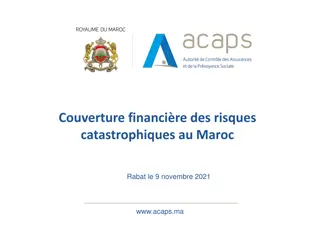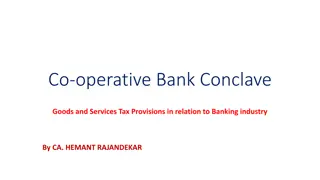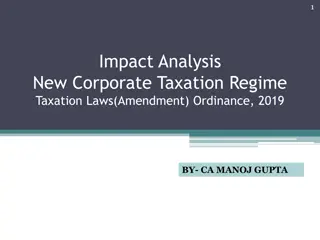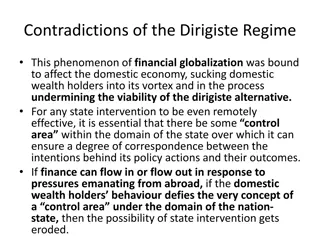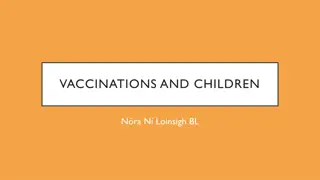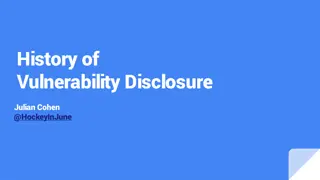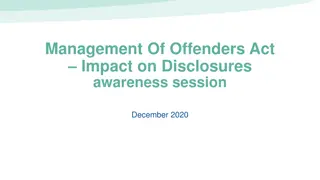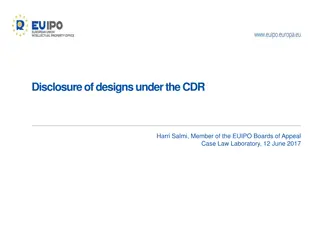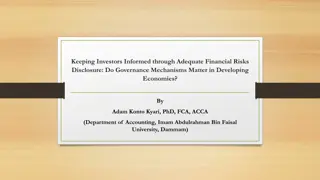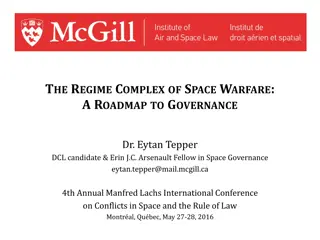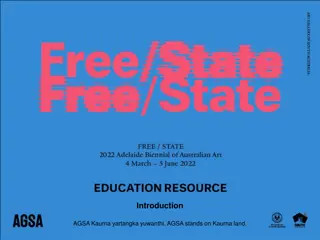Challenges of the Reduced Disclosure Reporting Regime in Australian Public Sector
Ongoing dissatisfaction with the Reduced Disclosure Regime (RDR) in Australian public sector reporting has led to issues such as lack of user-centricity, neutrality concerns, and complexity in government financial reporting. The framework's impact on government resourcing, expenditure history, and decision-making processes is under scrutiny. Legislative and regulatory frameworks, along with theoretical perspectives like New Public Management and Agency Theory, play crucial roles in shaping public sector reporting practices.
- Australian public sector
- Reporting regime
- Disclosure challenges
- Government finance
- Regulatory frameworks
Download Presentation

Please find below an Image/Link to download the presentation.
The content on the website is provided AS IS for your information and personal use only. It may not be sold, licensed, or shared on other websites without obtaining consent from the author. Download presentation by click this link. If you encounter any issues during the download, it is possible that the publisher has removed the file from their server.
E N D
Presentation Transcript
Impact of Reduced Disclosure Reporting Regime Australian Evidence Robyn Pilcher and David Gilchrist
Background Result of ongoing dissatisfaction with regard to sector neutral / transaction neutral framework Reduced Disclosure Regime Commenced 1 July 2013 Could have early adopted No Australian Jurisdictions have adopted the RDR Tier Arrangement Consists of Lines Through Standards: AASB 1053: Tiers 2010-2: Standards
Problems Whole of Government Reporting Place of Micro-entities Differences in Jurisdictions
Ongoing Issues Lack of User Centricity Neutrality of Framework Place of IASB and PSASB Decision Making Focus: Budget Process Half Yearly review Process Government Finance Statistics Reporting AASBs Financial Allocative Decision Focus
Public Sector Resourcing Expenditure History Budget Process (Political) Mid Year Review (Political) End of Year Accounts
Theoretical Framework New Public Management: Introduced in Europe in 1980s Closing the gap between Public Sector and Commercial styles Agency Theory: Resurgence in academic circles BUT who are the principals and who are the agents? Place of Government Place of Parliament (Parliamentary Sovereignty Theory) Place of the Community An aside Integrity Agencies Pragmatic Washminster System
Regulatory Framework Treasurer s Instructions Certification Requirements Personal Responsibility Australian Accounting Standards Health Department Guidelines and Policies: Delegations Approvals Commonwealth Reporting Requirements
Legislative Framework Financial Management Act 2006 Auditor General s Act 2006 Corruption and Crime Commission Act 2003
Audit & Accountability Public Sector Audit Process: Opinions: Financial Opinion Key Performance Indicators Controls
Methodology Document Review Interviews key WA Treasury Staff Interviews key Office of the Auditor General staff Reconciliation of the Treasury Models against the RDR requirements
Findings Users remain undefined What is removed is not relevant to PS Whole of Government Reporting Agency issues Qualitative Materiality in Public Sector Treasury Models True Savings?
Ongoing Research Heads of Treasury Reports I and II WA Treasury Project Local government Great Western Four Public Sector Group Bath, Cardiff, Exeter and Bristol
Future Arrangements? Public Sector RDR (PS-RDR) Third Tier of RDR (RDR3) Enhanced Framework Public Sector Standards




